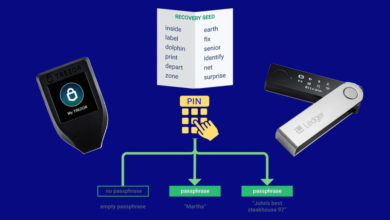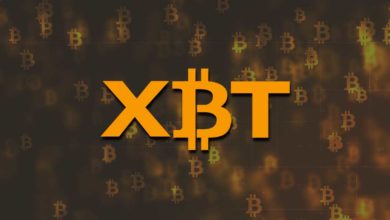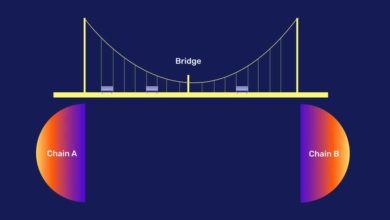What are Block Rewards? How Bitcoin mining block rewards work?
Previously on Coin Guides we’ve explained Bitcoin confirmations, Bitcoin mempool, Block height, transaction hash ID and many others. Here in this article we’re going to explain what a Block reward is and how the Bitcoin miners are rewarded for finding a block? This post applies not only to Bitcoin but any crypto currencies that are based on Bitcoin or basically any Proof of Work cryptocurrencies.
Most of the people who own Bitcoin are not involved in the mining process, they are just buying and holding BTC. Such users and the ones who are new to Bitcoin have many questions related to mining; especially the rewards involved in the mining process. Some of the common question are: what a block reward is? Who pays these block rewards and what happens when the Bitcoin block rewards goes to 0. Here we’ll explain everything that is related to Bitcoin block rewards. But before that lets first understand what is Bitcoin mining and how the Bitcoin network functions?
Bitcoin Mining
 Mining definition: It is a process of obtaining coal or other minerals from the ground. There is coal mining, copper mining, gold mining and then there is Bitcoin mining. While Bitcoin mining and Gold mining are completely different they do have some similarities. Both are intensive process and they both are carried out mainly because of one purpose which is rewards. In gold mining man power and machines are used to extract gold from the earth. Whereas in Bitcoin mining users use special computer hardware’s to solve a computational mathematical problem. For solving computational puzzles miners are rewarded in the form of Bitcoin.
Mining definition: It is a process of obtaining coal or other minerals from the ground. There is coal mining, copper mining, gold mining and then there is Bitcoin mining. While Bitcoin mining and Gold mining are completely different they do have some similarities. Both are intensive process and they both are carried out mainly because of one purpose which is rewards. In gold mining man power and machines are used to extract gold from the earth. Whereas in Bitcoin mining users use special computer hardware’s to solve a computational mathematical problem. For solving computational puzzles miners are rewarded in the form of Bitcoin.
Wait!? Who are these miners? Why do they solve mathematical problems? Why do they get Bitcoins in return and who issues these coins for solving the problem? To understand this lets first understand how traditional currency and banking system works.
Bank transaction vs Bitcoin transaction
Let’s say; person A wants to transfer $1000 to person B. As you can see there are only two people involved in this transaction. However there is also a third party involved. Bank – A centralized entity who maintains and manages the payment system. Once the person initiates the transaction the bank (banker) verifies the ledger, authenticates the transaction, and then moves the amount from the account of person A to B. In system like this only bank is responsible for the security and operation of the network as they are the only one controlling the entire payment network. However Bitcoin is different .

Bitcoin is a peer to peer network; meaning the system is distributed and decentralized. There is no single or central authority controlling the Bitcoin network. So who maintains the security of the Bitcoin network and who conducts the transaction here? Miners. In Bitcoin miners are the backbone of the entire network. Without them the whole system would be dysfunctional. They are responsible for the security of the network, issuing of new Bitcoins and conducting transactions.
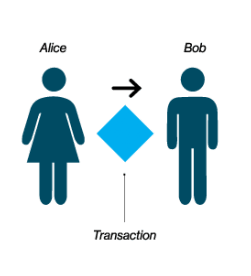 Let’s say: Person A wants to transfer few BTC or few satoshis to person B. Person A creates the transaction, sign it using their private keys and broadcasts the transaction to the Bitcoin network. Now it is miners duty to verify this transaction and add it to the ledger. Now again who are these miners? Miners are random people like you and me running Bitcoin software except with specialized computers (mining equipments). In other words they are special nodes on the blockchain who are dedicated towards the operation of the network. So how is a random person allowed to confirm a Bitcoin transaction?
Let’s say: Person A wants to transfer few BTC or few satoshis to person B. Person A creates the transaction, sign it using their private keys and broadcasts the transaction to the Bitcoin network. Now it is miners duty to verify this transaction and add it to the ledger. Now again who are these miners? Miners are random people like you and me running Bitcoin software except with specialized computers (mining equipments). In other words they are special nodes on the blockchain who are dedicated towards the operation of the network. So how is a random person allowed to confirm a Bitcoin transaction?
Block and Blockchain
The Bitcoin protocol is built on blockchain which is a growing list of records called blocks. When you initiate a transaction miners pick your transaction along with several other transactions that has been broadcasted to the network. They then enclose the list of transactions in a block, verifies them and then add it to the Bitcoin blockchain. In Bitcoin network roughly every 10 minutes a new block is created and each block contains a set of most recent transactions. It not only contains transaction information but a block also contains information specific to the blockchain such as: version, block id, hash of the previous block etc.
Now coming to transaction validation: In Bitcoin there are certain transaction validation rules set which ensures that the coins are not spent already, verifies the transaction size, syntax etc. Once the miner finds the transaction to be valid they then add it to a block but not yet allowed to submit the block to the network.
Now before broadcasting a block to the network miners need to solve a cryptographic equation. They are required to provide a Proof of Work solution. We won’t be covering the technical details such as nonce, hash function, SHA-256 etc which are all involved in the Bitcoin mining process. Anyways the following outline should give you a basic understanding.
Proof of Work solution
Now Proof of Work is a highly resource intensive task which requires a lots of computing power. Only those with enormous and efficient computational power will be able to solve the puzzle first. Once the miner finds the solution, their block will be validated by other miners and finally it gets added to the network. Once the block gets accepted by the network miners compete against each other to produce the next block on the blockchain.
Since this system is decentralized anybody can participate in the validation of the transaction. However do note that mining is a highly intensive task. One needs a lots of electric and computational power in order to solve the mathematical problem. Since it requires lots of resource; to compensate the miners the winning miner will receive reward in the form of Bitcoins. These rewards are actually new coins which are being distributed to the network. The reward includes the transaction fees of all the transactions + the block reward which is a pre-determined amount of Bitcoins.
An incentive structure like this motivates miners to constantly validate the Bitcoin transactions on the network. Not only that but as more and more miners join the party, the difficulty rises which in turn keeps the network secure and ensures the blockchain is immutable. Hope it explains! Now here are some of the common questions related to Block rewards.
What does Block Reward mean?
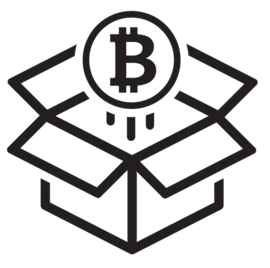 In Bitcoin the Block Reward refers to the amount of new Bitcoins distributed by the network to the miners who solve each blocks. Block rewards are the only way how new Bitcoins are created on the network. It operates both as an incentive mechanism as well as inflation mechanism. So how much is the block reward and who sets these rules?
In Bitcoin the Block Reward refers to the amount of new Bitcoins distributed by the network to the miners who solve each blocks. Block rewards are the only way how new Bitcoins are created on the network. It operates both as an incentive mechanism as well as inflation mechanism. So how much is the block reward and who sets these rules?
How are the block rewards determined?
Not only block reward, but the total coin supply, the reward halving structure is all already coded in the software and is set by the creator of the Bitcoin, Satoshi Nakamoto. However Satoshi does not control Bitcoin. Bitcoin is an open source application meaning the software is free, publicly available and anyone can contribute to the code. However none of the rules which are set can be changed without the consensus of the entire network.
Initially the block reward of Bitcoin network was 50 BTC. However this is not constant. The block reward structure in Bitcoin is designed in such a way that it halves every 210,000 blocks. Since the block time of Bitcoin is 10 Minute; roughly every 4 years the block reward halving occurs. Started in 2009 the first halving occurred in November 2013 which lowered the block reward from 50 BTC to 25 BTC. Currently (as of 2024) the block reward of Bitcoin is 3.125 BTC (Bitcoin last halved on April 19, 2024). Every time a miner finds a new block they will receive a reward of 3.125 BTC (excluding transaction fees). So why diminish the block rewards?
Block Reward Halving
As you probably know the total supply of Bitcoin is capped at 21 Million. Meaning there will be no more new coins created on the network after the max supply is reached. Now imagine what happens if there is no Bitcoin reward halving. If the block reward was fixed at 50 BTC then by this time all the 21 million coins would have mined. This diminishing block reward is designed to create a self sustaining network where the miners will be constantly rewarded for securing the network.
Coins have to get initially distributed somehow, and a constant rate seems like the best formula – Satoshi Nakamoto
So how will the miners secure the network in the long run if the block reward keeps decreasing?
What happens to network if block reward goes to zero?
This is one of the common question most beginners ask. The block reward is the only main incentive for miners. How will they conduct the network if they don’t receive any reward? Will the miners keep mining? The final halving is expected to occur somewhere around 2140. This is when it will reach the maximum supply of 21 Million BTC. According to the Bitcoin Whitepaper; after 64 halving events the block reward finally becomes zero. However there is something called transaction fees which you must take note.
Currently the amount that miners claim as a reward for creating a new block is the sum of block reward plus the transactions fees.
To send a transaction on the Bitcoin network; users have to pay a fee. This transaction fees is currently negligible. However in future as the network grows and gets widely accepted it is believed that the transaction fees should be more than enough to compensate the miners.
Once a predetermined number of coins have entered circulation, the incentive can transition entirely to transaction fees and be completely inflation free – Satoshi Nakamoto
Reference:
- Bitcoin Whitepaper: https://bitcoin.org/bitcoin.pdf
- Satoshi Nakamoto Institute: https://satoshi.nakamotoinstitute.org/
- Bitcoin Block Reward Halving: https://www.bitcoinblockhalf.com/

